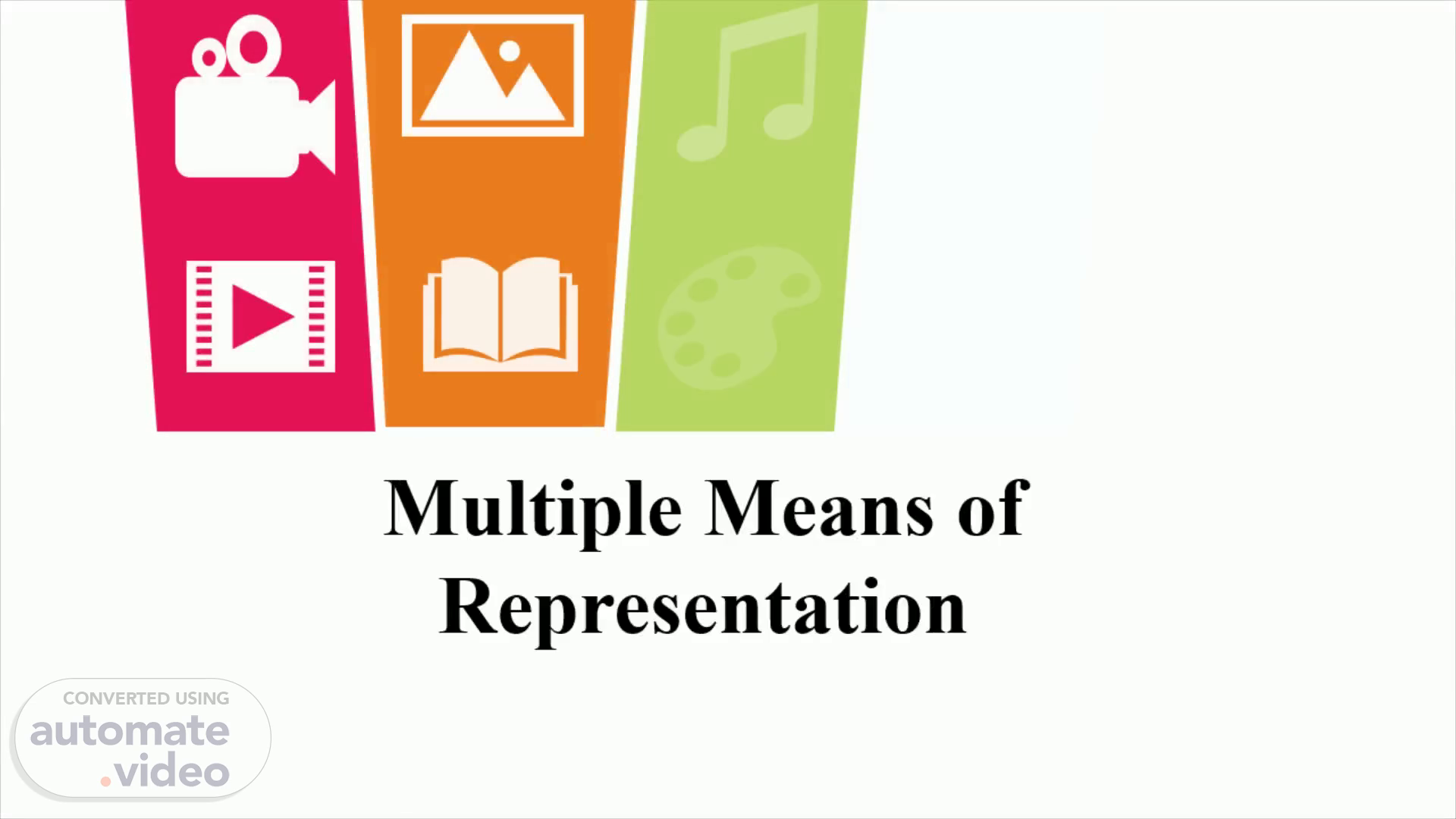
PowerPoint Presentation
Scene 1 (0s)
Multiple Means of Representation. A Universal Design for Learning Principle.
Scene 2 (10s)
4 Types of Learning Styles: Games and Tips for Different Learning Styles | MentalUP.
Scene 3 (35s)
Multiple Means of Representation. Providing multiple means of representation of course content and materials. This is the “what” of learning: what are students expected to learn, engage with, and access in order to succeed in the course?.
Scene 4 (55s)
Multiple Means of Representation. This principle focuses on presenting information and content in different ways, including providing options for perception, language and symbols, and comprehension..
Scene 5 (1m 11s)
Multiple Means of Representation. Perception: Can students interact with content in ways that don’t depend on a single sense (like sight, touch, hearing, or movement)?.
Scene 6 (1m 34s)
Multiple Means of Representation. Language and symbols: Do instructors communicate through language that creates shared understanding, clarity, and comprehensibility for all students (by clarifying vocabulary, explaining texts, symbols, and translations, and avoiding jargon)?.
Scene 7 (1m 54s)
Multiple Means of Representation. Comprehension: Do instructors help students transform what they are learning into useable knowledge by connecting to prior knowledge, highlighting patterns and relationships, and helping students learn how to transfer their knowledge to other settings?.
Scene 8 (2m 7s)
How to Use Multiple Means of Representation to Design, Develop and Evaluate courses ?.
Scene 9 (2m 10s)
Designing Courses using Multiple Means of Representation.
Scene 10 (2m 13s)
Developing Courses using Multiple Means of Representation.
Scene 11 (3m 28s)
Evaluating Courses using Multiple Means of Representation.
Scene 12 (4m 43s)
Multiple means of representation allow us as instructors to reflect upon our assumptions that may influence the content taught, and how we can present controversial, sensitive, and challenging content courses that cater to all learners. Hence, multiple means of representation ensure content materials cater to all individuals’ differences in the learning environment and emphasize the importance of all learners regardless of their differences ..
Scene 13 (5m 23s)
Bass, G., & Lawrence-Riddell, M. (2021). UDL and 21st Century Learning: Faculty focus . Faculty Focus | Higher Ed Teaching & Learning. https://www.facultyfocus.com/articles/blended-flipped-learning/universal-design-for-learning-2/. Dalton, E. M. (2017). Universal Design for Learning: Guiding Principles to reduce barriers to Digital & Media Literacy Competence. Journal of Media Literacy Education , 9 (2), 17–29. https://doi.org/10.23860/jmle-2019-09-02-02 Giraldo , E. (2021). Universal Design for Learning: Multiple Means of Representation . Knowledge One. https://knowledgeone.ca/universal-design-for-learning-multiple-means-of-representation/. La, H., Bair, H., & Dyjur , P. (2018). Universal Design Learning in Higher Education . https://taylorinstitute.ucalgary.ca/sites/default/files/UDL-guide_2018_05_04-final%20(1).pdf..